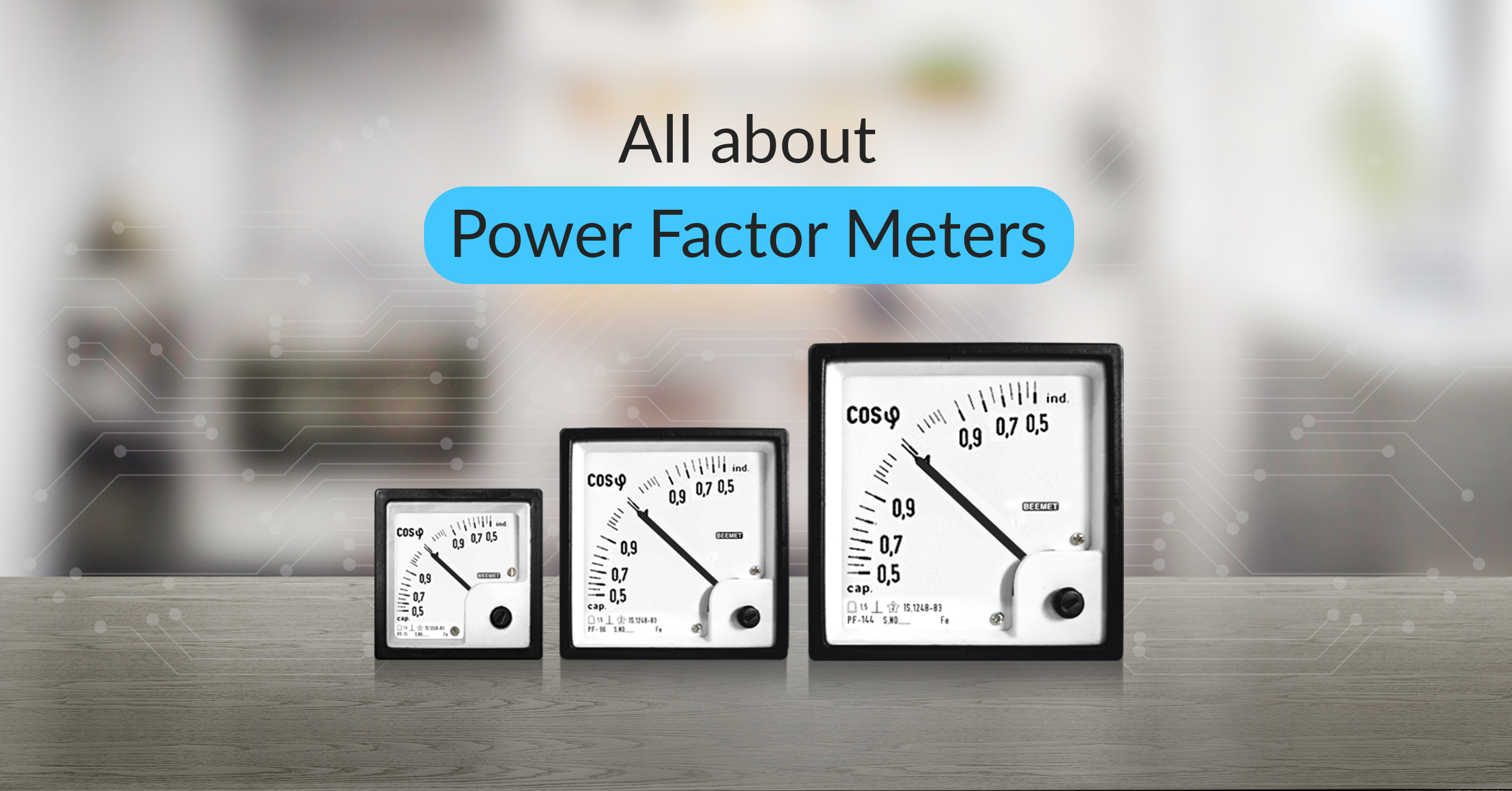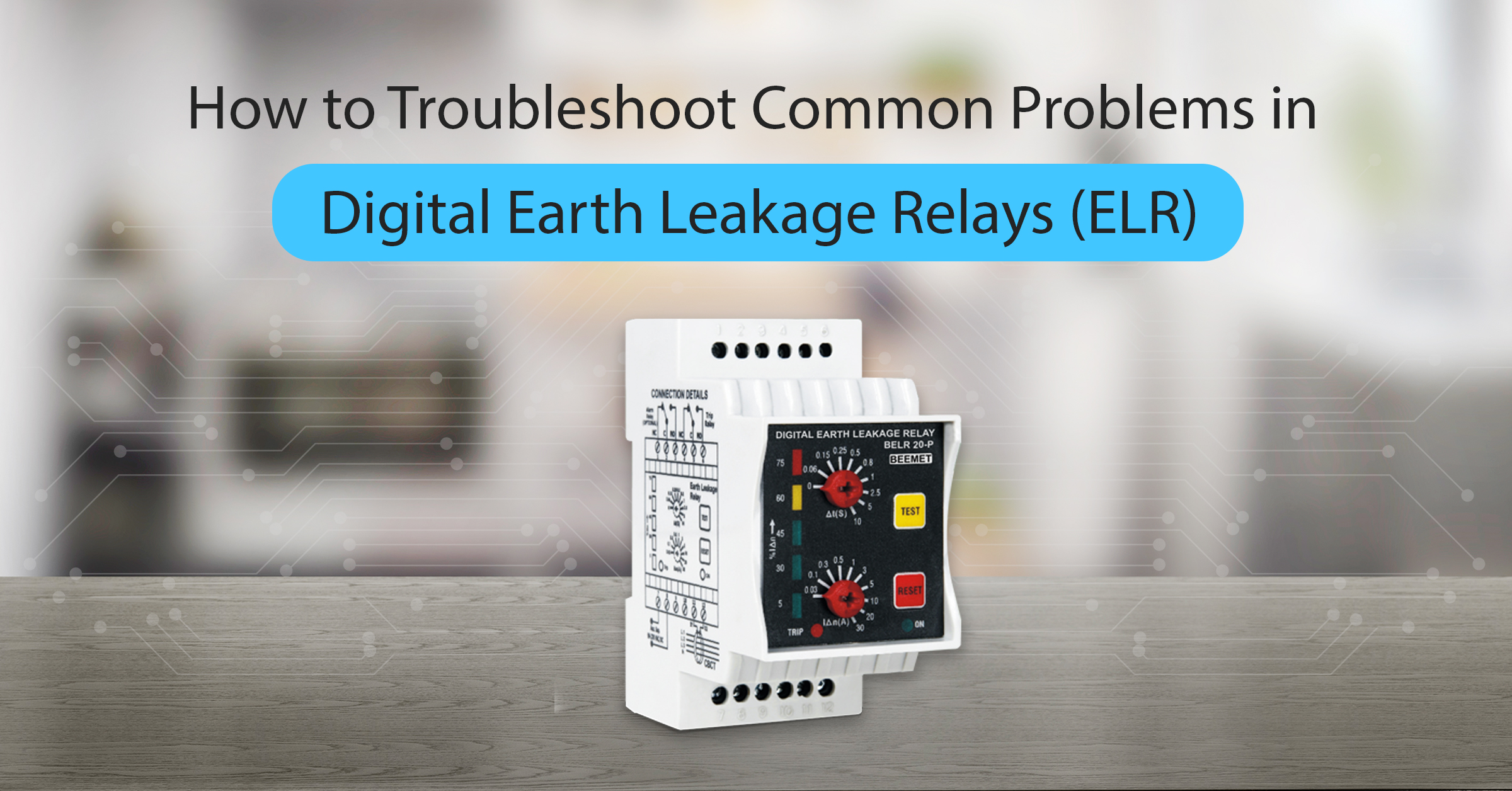In this blog, we will learn about power factor meters, explaining their purpose, different types, working principles, and the numerous benefits they offer.
Imagine a device that acts like a detective to your electrical system, uncovering hidden inefficiencies and helping you save money. That’s what power factor metres do. Let’s dive deeper into them.
What is a Power Factor Meter?
Power factor meter is a translational device which measures both real and reactive power and calculates the resulting energy thing.
Electricity travels through your gadget in two elements: real power (the actual energy used by your home equipment) and reactive power (used by devices to create magnetic fields for operation).
A perfect situation could have minimal reactive power, but in fact, most gadget create a few. This is where power factor meters come in. It’s a ratio among real energy and overall electricity (real reactive), expressed as a percentage. A perfect energy element is a 100% which indicates minimal reactive electricity and green use of energy. By experiencing your strength aspect, you advantage treasured insights into your electric gadget’s fitness and performance.
Different Types of Power Factor Meters:
There are mainly two types of power factor meters:
- Analog Power Factor Meters: These panel metres utilize dials and needles to display readings. They’re a cost-effective option for basic power factor monitoring. Think of them as reliable veterans that provide straightforward information.
- Digital Power Factor Meters: These panel meters leverage the digital technology to supply highly accurate and detailed measurements. Imagine a high-tech assistant on your electrical system. Digital meters frequently come equipped with functions like large LCD Displays, Data Logging, Multiple Measurement Functions, etc.
How Power Factor Meters Work?
The magic behind a power factor meter lies in its capability to measure each voltage and current simultaneously. But it’s what it does with these measurements that clearly sets it apart:
- Voltage and Current Measurement: Power factor meters normally have dedicated terminals for connecting for your electrical system. They degree the voltage and current flowing through the circuit.
- Power Calculations: Using the measured voltage and present day values, the meter performs calculations primarily based on electric standards to determine actual power, reactive power, and in the long run, the power factor.
Advantages of Using Power Factor Meters:
Power factor meters are more than simply fancy measuring tools. They offer a variety of advantages that may significantly affect your overall electrical system health:
- Cost Savings: By figuring out regions of low electricity component, these panel meters empower you to take action. A low power factor issue often translates to paying utility components for reactive power that doesn’t do any actual work. By improving your power factor, you can easily lower your strength parameters.
- Improved Efficiency: Power factor meters are like efficiency coaches in your electrical system. They assist you to identify regions for optimization which allows you to fine-tune your system and make sure your system functions at its maximum potential. This can cause decreased power consumption and potentially lower operating fees.
- Informed Decision-Making: Having a clear picture of your power factor permits you to make informed selections concerning your electrical systems. For instance, you may decide if investing in a power factor correction equipment is a profitable investment primarily based on potential cost saving.
Applications of Power Factor Meters
The benefits of power factor meters expand across a huge variety of industries and applications. Here are some top examples:
- Industrial Facilities: Manufacturing plants and business facilities depend closely on electrical systems. Power factor meters play an important role in tracking power factor, identifying areas for improvement, and ensuring top notch performance.
- Commercial Buildings: From office buildings to shopping malls, efficient electrical systems are important for cost control. Power factor meters help constructing managers perceive and address low power factor situations, leading to potential cost savings on electricity bills.
How to Select the Right Power Factor Meter?
Choosing the right power factor meter depends on your specific requirements. Here are a few elements to keep in mind;
- Complexity of your Electrical System: For fundamental monitoring in an easy machine, an analog meter would possibly suffice. For complex structures or the ones requiring specific information evaluation, a digital meter with records logging and multiple measurement functions is a better choice.
- Budget: Analog meters are usually cost-effective, at the same time as digital meters offer superior features at a higher price point.
- Desired Features: Consider the features that are most important to you. Do you want data logging skills? Multiple measurement capabilities? A large and easy to read display? Prioritize the capabilities so that it will be beneficial for your applications.
Partner with BEEMET for Top-Tier Power Factor Meters
BEEMET, a leading manufacturer and supplier of power factor meters, understands the importance of having the right tools for the job. That’s why we offer a comprehensive range of high-quality power factor meters to suit your specific needs. From user-friendly analog models to feature-rich digital options, we have the perfect meter to empower you to take control of your electrical system’s efficiency.
BEEMET’s knowledgeable team is right here to assist you in choosing the precise power factor meters as per your requirements. Don’t hesitate to get in touch with us for more details.
Frequently Asked Questions:
- Can a low power factor damage my electrical system?
While a low power factor meter typically will not harm the system directly, it may lead to increased heat generation. Over time, this immoderate heat can make a contribution to a shortened lifespan for the system.
- How can I improve my power factor?
There are various techniques to enhance your power factor, such as installing power factor correction capacitors or the usage of synchronous motors that can stabilise the reactive power in the system. A certified electrician can check your specific condition and endorse the most suitable solution.
- How frequently do I need to monitor my power factor?
The frequency of monitoring depends on the size and complexity of your electrical system. For critical systems, non-stop tracking might be important. For smaller systems, monthly or quarterly tracking would possibly suffice.



